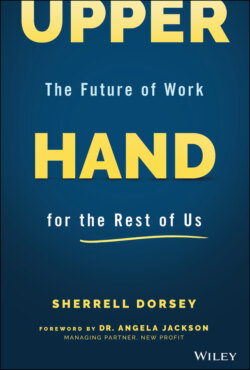Читать книгу Upper Hand - Sherrell Dorsey - Страница 10
Redlined to Regulation
ОглавлениеI spent a great deal of time between the South End of Seattle and the Central District. This wasn't an accident. Most of Seattle's Black and brown communities lived between these two neighborhoods.
Seattle was no exception to the racial covenants that were established as early as the 1920s to prevent ethnic minorities from purchasing or living in homes and other property in certain neighborhoods. Before federal anti‐discriminatory housing laws and the Fair Housing Act were enacted in 1968, people of color in Seattle were relegated to housing in Seattle's International Districts, the Central Area, and other neighborhoods bordering downtown. Even with laws being in place to prevent these restrictions since the 1940s, Realtors and sellers would not sell to Indigenous, Black, Asian, Italian, or Jewish Americans.
In the 1960s, Seattle was roughly 92 percent white. Over 60 percent of the Black population pushed into Seattle's Central District (the CD, as it was called colloquially). By the 1970s, that number had swelled to 73 percent Black residents.
Despite its densely populated area close to downtown, amid the suburbs, it was an undesirable location outside of the Black community. The area anchored Black homeowners and their families, as well as the Black business community.
My grandfather purchased his first home with his second wife in late 1960 in Leschi/Lake Washington, which bordered the Central Area. Today, single‐family homes in that area sell for well over $1 million.
Grandpa's last and current home in the South End neighborhood of Seattle was purchased in the 1980s when the community, formerly a lot of farmland, was developing. He'd met his third wife, Rosella, and they had built their lives in a shotgun house they built on.
My mom also purchased her home in 1988 for just over $50,000. After a few years of getting acclimated to Seattle and building up her career, purchasing a property as a single woman was a major feat. Her mother had never been able to do the same. The 1940s‐built home was just minutes away from my grandfather, in a neighborhood of mixed‐income, multiracial neighbors with whom I grew up from the time I was just three years old and until the time I left for college. Today, home prices in Seattle average $700,000.
My family, generationally, had moved from bouts of poverty and into the middle class through homeownership, state school education, and steady jobs that provided stability, health care benefits, and a little more access to opportunities they had not experienced growing up.
By the time I was taking the bus between school and my after‐school programs, gentrification had swept a great deal of the Central District community's flavor from the sidewalk. It began with Starbucks on Jackson and 23rd; then a few of the local mom‐and‐pop shops were no longer able to afford the rent. It spread like a virus, until every corner was infected with the promise of boxy and architecturally unattractive apartments.
As the condos went up, we saw the demise of local cultural icons and businesses: Black‐owned Liberty Bank on 24th and East Union Streets; Sammy's Best Burgers just two blocks north; Ms. Helene's Kitchen; Philly's Best Cheesesteak (now reclaimed as a weed shop); Catfish Corner; Carol's Gifts, and countless other enterprises that are now just names of the past.
Today, fewer than 18 percent of the CD's population is Black. Its white population, however, hovers over 60 percent. Do cities change and evolve? Yes. Do people and families sell their homes and move out and life moves on? Absolutely. But do all people have equitable access to the progress afforded to a select few? Not by a longshot.
Now, the community is a centerfold of high‐priced condos and multimillion‐dollar homes. It's a beautiful reality of progress that many of the neighborhood's Black inhabitants didn't get a chance to participate in as the city itself became a world‐renowned tech hub.
